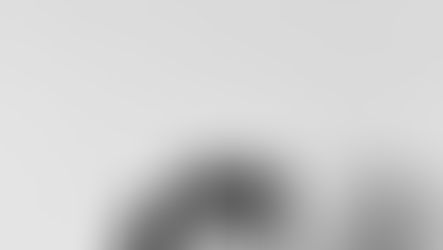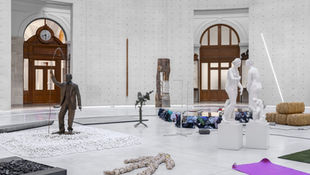
WOLFGANG TILLMANS
Conscious from a very young age of how cultural forces can define artists’s practice, he empowered himself by his critical approach to venues and models. His cultural participation extends way beyond making images to include the activities of curating and presenting as he explicitly engages editorial and installation processes that determine a new expression of his work. Millions of people take photos everyday but the most arduous thing a photographer can do is develop a personal, profound and recognisable visual style. These adjectives can easily describe each body of work produced by Wolfgang Tillmans.

Moon in Earthlight, Morena di Luna, Hove, UK, September 2021
Through various exhibitions and publications, the artist materialises a specific condition of exposure that is crucial to his art and offers an evaluative commentary on the ways in which presentation bestows value and addresses constituencies. Tillmans occupies a rare if not singular position in the field of contemporary art as he regularly inhabits the roles of photographer, critic and curator through combining production modes of making and presenting. He is not an artist who operates from project to project but who progresses along numerous interweaving paths at once. The overlapping of images that Tillmans has made over long periods, combined with the apparently casual, spontaneous feel of many of the photographs, has largely obscured the degree to which he is quite deliberately pursuing certain ideas. He states that there are certain particular things that he is looking for. His lack of one signature style also contributes to the sense that his images simply fall into place by chance and thus traces of his style can be seen everywhere. Yet somehow we can tell almost instantly that a photograph was taken by Tillmans, despite numerous imitators. It can be challenging to verbalise just why that is, given his resistance to a conventional signature and the idea of authority which undeniably operates according to different philosophy. He regularly proposes a reconfiguration of art, institution and viewer relations.

Concrete Column, Regen Projects, Los Angeles, December 2021
It does not come as a surprise that Tillmans’s earliest works were made by enlarging found images on a laser copier, and that his childhood interest was astronomy. Finding pattern and meaning by looking from many perspectives have become crucial for him. Undeniably this also helps clarify why Tillmans has been able to broaden his practice into the realm of abstraction, especially with those works resulting from darkroom experiments that make no use at all of the camera and the film negatives. Creating photomechanical reproduction seem not literal and pacifying but plastic and transformable, something inviting creative manipulation. All these adjustments are openly and dramatically declared by his abstract pictures. These, after all, are mostly pictures of process and action rather than of things, with an emphasis on drawing and the movement of materials. Like most modern abstraction, Tillmans uses his medium in ways that would seem improper with the aim to serve certain greater representational end. His abstractions are just largely oriented, perhaps even more so, since they present moments where common materials correspond with our basic cultural meanings, and in this way picture expression as if not yet reduced and assigned, as still a field of open possibility, one that seemingly any of us could embrace.

Galerie Buchholz, Berlin, 27 November 2020–27 February 2021
The lighting of his photographs is anti-theatrical as he generally keeps it flat, quite often by bouncing a hand flashgun intuitively into the room, preferably off a white wall. This technique largely eradicates shadows, thus giving the picture a clarity and a forthrightness that is understated but unmistakable. We have a tendency to edit out shadows from our consciousness of what we see in daily life. Tillmans keeps them mostly out of his photographs, too. This low-key formal technique was developed as early as 1991, with the portraits he made of his schoolmates at Bournemouth College of Art and friends from Germany. These photographs he considers his first successful portraits. People he represents are individuals, with their own styles, their own self-esteem and certain sense of how they want to present themselves. They are also components of a larger picture. Their images become part of a mobile network, constantly rotating, shifting and generating new meanings from new juxtapositions. Tillmans’s distinctive installations reinforce this idea of a kaleidoscope of images.

Juana de Aizpuru, Madrid, 26 October 2019–15 December 2019
In Tillmans’s work, the desired effect is produced through an assemblage of details. Each element depends on and facilitates the next, whether in a portrait or landscape, in a forest or nightclub, and eventually informs the entirety of the process. Each part communicates subsistence at once singular and connected, an individual in a moment or an entire body of work over time. Undeniably Tillmans seeks to provide a more intimate dimension in order to create a perfect balance between visual order and discipline as well as the sublime and often beautiful intangibles and ambiguities of everyday life. Tillmans ultimately produces a curiously dialectical relationship between a sensual, emotional, intellectual, and romantic experience of the world and the limiting social constructs that inevitably frame it.





